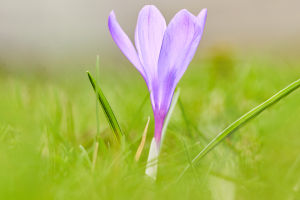Dandelions are among the most resilient and widespread plants in the world.
Known for their bright yellow flowers and distinctive seed heads, these plants are hardy, adaptive, and quick to spread.
Many people recognize dandelions as weeds due to their rapid spread and ability to grow in almost any soil type. However, they have a fascinating life cycle and an impressive lifespan. But how long do dandelions live? Let’s explore the lifespan and life cycle of these well-known plants.
A Perennial Plant with a Long Lifespan
Dandelions (Taraxacum officinale) are perennial plants, meaning they can live for multiple years. Unlike annuals, which die after a single growing season, perennials regrow each year from the same root system. If left undisturbed, a dandelion plant can live for many years—typically up to 5-10 years, although in ideal conditions, some have been known to survive for even longer.
The lifespan of a dandelion largely depends on its growing environment. Dandelions that face harsh conditions or frequent disturbance, like those found in mowed lawns, may live shorter lives. However, in undisturbed, favorable conditions, dandelions are remarkably long-lived and can produce flowers and seeds season after season.
The Dandelion Life Cycle
To understand a dandelion’s lifespan, it helps to look at its life cycle. Dandelions go through several stages, from germination to flowering and seed dispersal. This cycle allows them to spread quickly and establish themselves in various environments.
1. Germination
Dandelions start from seeds, which are dispersed by wind. Each mature dandelion produces a large number of seeds, which helps them spread over vast areas. When a seed lands on soil, it germinates under favorable conditions—often in moist soil and warm temperatures. Within a few days to a week, the seed sprouts, and the young plant begins to establish itself.
2. Seedling Stage
After germination, dandelions develop small leaves close to the ground in a rosette pattern. This leaf arrangement allows them to absorb sunlight efficiently and start photosynthesis. During this stage, the plant focuses on building a strong root system, especially the taproot, which will support its growth throughout its life.
3. Growth and Development
As the plant matures, it continues to grow its taproot, which can extend several feet deep. This deep root helps the dandelion access water and nutrients from below the surface, allowing it to survive dry conditions and thrive in various soils. The taproot is also why dandelions are difficult to remove—any small piece of root left behind can regrow into a new plant.
4. Flowering
Mature dandelions produce bright yellow flowers, which are often one of the first signs of spring. A single dandelion plant can bloom multiple times in one growing season, producing flowers from early spring through fall. Each flower head is made up of many tiny florets, which will eventually turn into seeds.
5. Seed Production and Dispersal
After a dandelion flower blooms, it closes and begins to transform into a seed head. This process can take several days, and when the flower reopens, it displays a puffball made up of many individual seeds attached to fluffy structures called “pappus.” This structure allows the seeds to be carried by the wind over long distances, helping dandelions spread.
Each dandelion puffball can contain over 100 seeds, and since dandelions bloom multiple times a year, they produce hundreds or even thousands of seeds annually. This prolific seed production is a major factor in their resilience and widespread presence.
Factors Influencing Dandelion Lifespan
While dandelions have the potential to live for many years, several factors can affect their lifespan:
• Environment: Dandelions thrive in well-drained soil with access to sunlight, but they are highly adaptable and can grow in a variety of conditions. However, extreme environments, such as overly dry or waterlogged soil, can shorten their lifespan.
• Disturbance: Regular mowing, weeding, or cultivation can limit a dandelion’s growth and prevent it from establishing a deep root system, reducing its lifespan. Still, because of their regenerative ability, even a small part of the root left in the ground can regrow into a new plant.
• Climate: In mild climates, dandelions can remain active throughout the year, while in colder regions, they enter a dormant phase in winter and regrow in spring. This cycle of dormancy and regrowth allows them to survive for multiple years.
The Dandelion’s Ability to Regenerate
One of the remarkable aspects of dandelions is their ability to regenerate from small root fragments. This regenerative trait allows them to persist and spread even after attempts at removal. Each time a dandelion is mowed or cut down, it simply uses its energy reserves in the taproot to regrow. This tenacity is part of what gives dandelions their reputation as hardy weeds, but it also speaks to their impressive survival skills.
Dandelions have an extraordinary ability to live and thrive under diverse conditions, with the potential to survive for 5-10 years or more in undisturbed environments. Their robust root systems, prolific seed production, and adaptability all contribute to their longevity and resilience. Although many people view them as weeds, dandelions are fascinating plants with a life cycle designed for survival. Understanding the lifecycle of the dandelion offers a glimpse into the world of resilient plants and highlights why they are found in so many parts of the world.
So, the next time you see a dandelion in your yard, you’ll know you’re looking at a plant that’s built to last and thrive in almost any environment.


